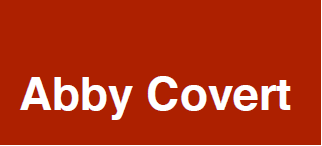“Make Something”
My second class at SVA Products of Design was intended to be about communicating intent. I had a short lecture and group activity prepared and everything. However, upon arriving at school, there was a blizzard of questions about the intent not of their thesis projects, but instead for the thesis class itself.
In creation of the syllabus I shared here with you all last week, I had used the words “make something” to express a weekly prompt for the students to get up from their writing desks and actually make something to better relate to their thesis subject.
In the first class we discussed the importance of objects of discourse and how the making of things helps not just the end users, but also the makers and stakeholders, to have clearer interpretation of the larger things that they are making.
For Example:
- making a simple flow diagram can help someone working on a mobile application
- making a map of competitive territory can help someone working on a product launch strategy
- making a schematic of a restaurant menu can help someone working on back-of-house restaurant planning
- making a prototype of a product can help a maker get iterative feedback from users
With all these examples given, we still struggled to align on the words: make something. The students seemed to have taken it as an edict that they needed to put away whatever they are working on currently and work on something new each week. They had read my words as: Make something new.
It was my intent to give them space, but it was their perception that I was just giving them another distraction from the work they had in their hearts to do. We talked about it, and I realized that while they had seen a map of assignments, I had in no way explained *my intent* for architecting the class this way:
I told them that in developing the class, I had decided that I didn’t want to get in their way, but I also didn’t want their autonomy to. I had spent time learning about them from their past instructors and by making a few guest appearances in their classes and events last semester.
In my observation of them, it became clear that each of them comes to this class with a different level of definition of their thesis “project” — at this point the “why” is getting clearer for most of them but the “what” and “how” are not yet fully formed for many of them.
By putting a theme on each week of their progression towards “doneness” and anchoring them with writing and making prompts for each week, my hypothesis is that they will all deal with certain concepts and milestones on the same timescale as one another, opening up opportunities for cross-collaboration and conversations in the studio.
I am following along and attempting each of the assignments myself, and some of the upcoming assignments do feel uncomfortable or like a distraction from “just writing my book.”
So I told them about my intent in architecting the class:
- I intend for them to explore the uncomfortable parts of things they are working on
- I intend to distract them at times when they could be getting too myopic
- I intend to make them move out of their comfort zones
- I intend to make them think about the same thing in new ways
- I intend for them to feed off each others’ success and learn from each others’ failure
- I intend to make them make things, not just talk about things.
I hope that the conversation we had about our misalignment of language was fruitful and they all left understanding my intent. I learned that in not communicating my intent clearly, a different intent was projected onto my work as a teacher.
I look even more forward to helping them to communicate their intent further over the weeks to come with this important lesson in my back pocket.
Thanks for reading.
